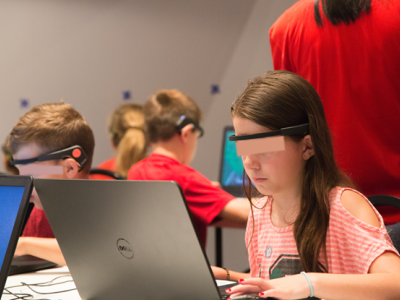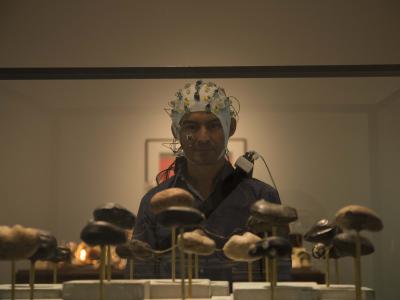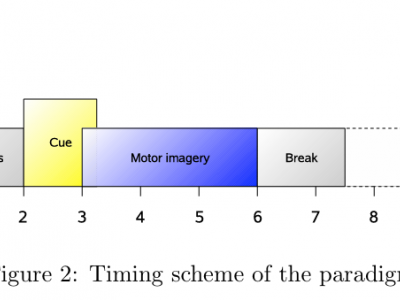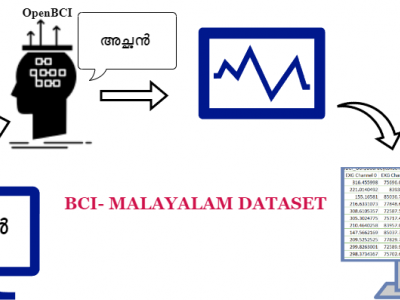Neuroscience
One of the grand challenges in neuroscience is to understand the developing brain ‘in action and in context’ in complex natural settings. To address this challenge, it is imperative to acquire brain data from freely-behaving children to assay the variability and individuality of neural patterns across gender and age.
- Categories:
 2302 Views
2302 ViewsRecent advances in scalp electroencephalography (EEG) as a neuroimaging tool have now allowed researchers to overcome technical challenges and movement restrictions typical in traditional neuroimaging studies. Fortunately, recent mobile EEG devices have enabled studies involving cognition and motor control in natural environments that require mobility, such as during art perception and production in a museum setting, and during locomotion tasks.
- Categories:
 3646 Views
3646 ViewsThis dataset is associated with the paper, Jackson & Hall 2016, which is open source, and can be found here: http://ieeexplore.ieee.org/document/7742994/
The DataPort Repository contains the data used primarily for generating Figure 1.
- Categories:
 2069 Views
2069 ViewsThis paper introduces a dataset capturing brain signals generated by the recognition of 100 Malayalam words, accompanied by their English translations. The dataset encompasses recordings acquired from both vocal and sub-vocal modalities for the Malayalam vocabulary. For the English equivalents, solely vocal signals were collected. This dataset is created to help Malayalam speaking patients with neuro-degenerative diseases.
- Categories:
 537 Views
537 Views
This is the supplementary document for the review paper titled “Comprehensive and Data-Driven Literature Review of Supernumerary Robotic Limbs,” which presents a comprehensive and data-driven review that offers a quantitative analysis of Supernumerary Robotic Limbs (SRLs), covering application areas, structural designs, control strategies, embodiments, and their interconnections.
- Categories:
 35 Views
35 Views
Finger Scanning Experiments: Participants conducted experiments while seated and wearing an eye mask to eliminate visual information. They were instructed to horizontally scan the surface back-and-forth eight times with one of their fingers to assess surface roughness. The finger's motion was optically captured at a frame rate of 60 fps. Scanning speed was determined by measuring finger positions at each frame and dividing them by the frame length. Image analysis was performed using OpenCV, where the finger outline was extracted from the video.
- Categories:
 53 Views
53 Views
Resilience is an important indicator of our defence mechanism against mental illness. Its assessment is conventionally done using psychological questionnaires and has also been recently investigated using neuroimaging modalities. These modalities provide objective and physiological-based assessment of resilience for prognosis and training purposes such as in the neurofeedback and behavioural therapies. This study investigates the use of electroencephalogram (EEG) to assess mental resilience in 2-Class, 3-Class and 4-Class models during resting and task conditions.
- Categories:
 131 Views
131 ViewsThis data set consists of EEG data from 9 subjects. The cue-based BCI paradigm consisted of four di erent motor imagery tasks, namely the imag ination of movement of the left hand (class 1), right hand (class 2), both feet (class 3), and tongue (class 4). Two sessions on di erent days were recorded for each subject. Each session is comprised of 6 runs separated by short breaks. One run consists of 48 trials (12 for each of the four possible classes), yielding a total of 288 trials per session.
- Categories:
 350 Views
350 Views
Faces and bodies provide critical cues for social interaction and communication. Their structural encoding depends on configural processing, as suggested by the detrimental effect of stimulus inversion for both faces (i.e., face inversion effect - FIE) and bodies (body inversion effect - BIE). An occipito-temporal negative event-related potential (ERP) component peaking around 170 ms after stimulus onset (N170) is consistently elicited by human faces and bodies and it is affected by the inversion of these stimuli.
- Categories:
 85 Views
85 ViewsIn today’s context, it is essential to develop technologies to help older patients with neurocognitive disorders communicate better with their caregivers. Research in Brain Computer Interface, especially in thought-to-text translation has been carried out in several languages like Chinese, Japanese and others. However, research of this nature has been hindered in India due to scarcity of datasets in vernacular languages, including Malayalam. Malayalam is a South Indian language, spoken primarily in the state of Kerala by bout 34 million people.
- Categories:
 617 Views
617 Views




